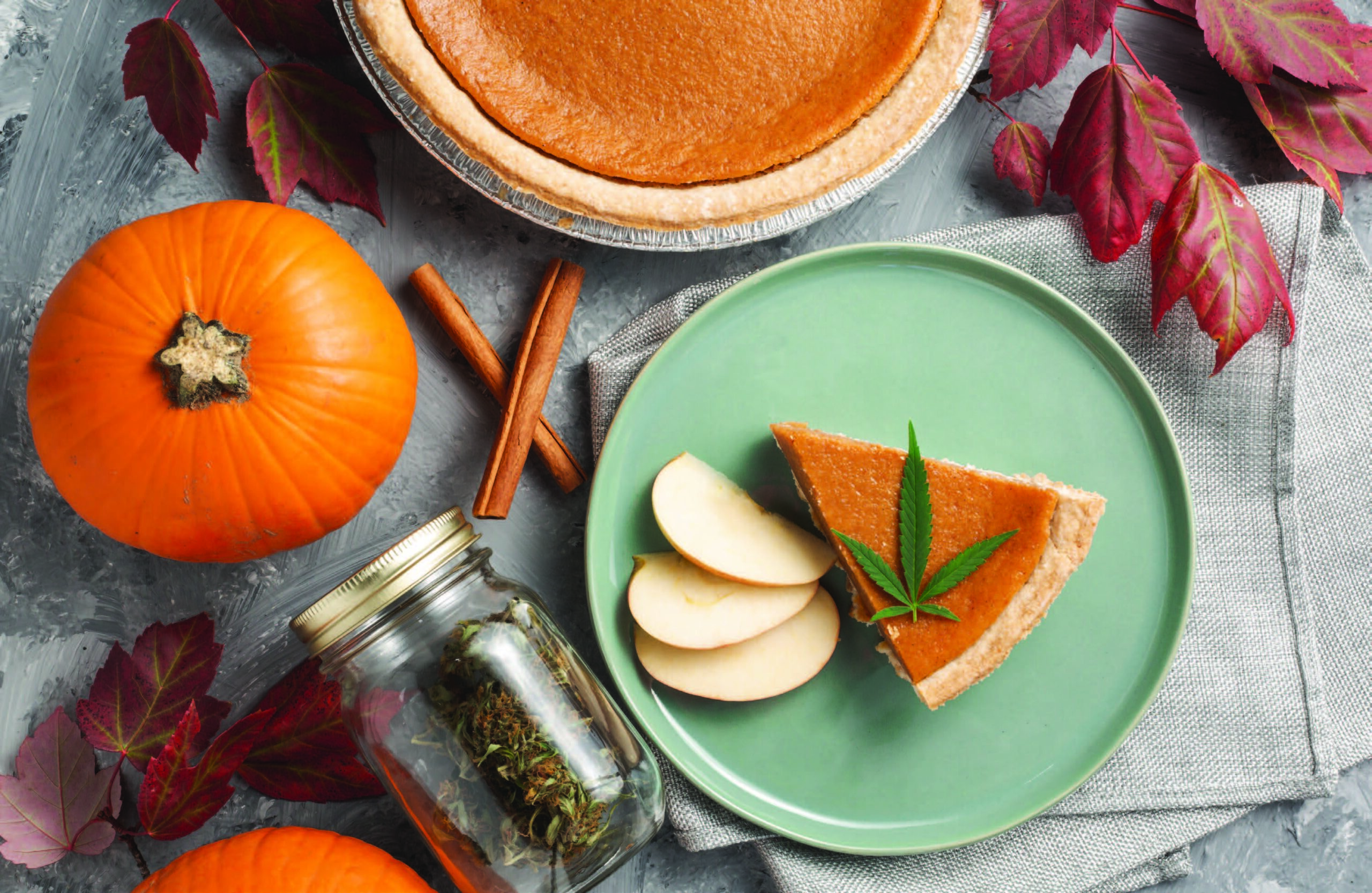Maybe you’re doing a big fancy Thanksgiving meal with all your extended relatives this year, who will no doubt argue mercilessly with you about politics and the election. Perhaps you’re doing a small, non-stressful “Friendsgiving” with your closest Durango buddies, toking beforehand so everything tastes better. Luckily, you CAN buy alcohol in Colorado on Thanksgiving Day (some states don’t allow this, believe it or not), but wake-n-baking is another solid option available to us Coloradoans (unless your family is anti-legalization, in which case, chew a discreet gummy edible). No matter what your situation, we’ve got some tips and tricks for making your meal delicious. If you don’t want to screw this up like you do everything else in your life (just kidding, kind of), listen up. (With expert insight from Mike O’Brien, head chef at Mercy Regional Medical Center and maker of the turkeys for Durango’s annual Community Thanksgiving Dinner).
Picking the turkeyIt’s easier now than ever to find USDA certified organic turkeys in grocery stores (and we all know Durangoans love to eat organic). These guys are fed an all-organic vegetarian diet without antibiotics. They are often a little more expensive, because the feed the birds eat is costlier.
If you’re debating between a fresh and frozen turkey, keep in mind that fresh turkeys are available right before Thanksgiving (purchase one or two days before). Make sure to check the sell-by date on a fresh turkey because they can sometimes be held for a while before making it to the store. If you want a frozen turkey, you’ll need to thaw it in the refrigerator. This option is best if you’re busy and want to acquire your turkey well before the holiday and be done with it.
“I always think the big ones are too tough and harder to cook,” said O’Brien. “I try to go for an 18- or 20-pounder at the hospital; but at home, I’ll cook a 14 or 16-pounder.” You can estimate about 1 to 1.5 pounds of turkey per person, so tally up your guests (skipping the vegetarians, of course). Add a couple pounds for the bones. So for eight people, you’ll want a 12- to 14-pound turkey.
Thawing the turkeyTurkeys thaw at a rate of 4 pounds per day, so estimate that a 16-pounder should take four days. O’Brien thaws the 12 turkeys he cooks at Mercy for about a week, then starts breaking them down a few days before Thanksgiving. “I keep a lot of them whole, but break some down and roast the bones off and make the stock, and then make the gravy from that,” said O’Brien.
Cooking the turkey You should invest in a meat thermometer, if you haven’t already. They’re inexpensive and can be found at the supermarket. Don’t use the pop-up thermometer that comes already inserted into your bird (just take that out and throw it away – it’s for amateurs). Pop-up thermometers are often inaccurate, and many are set to pop up at 180 degrees, by which time your turkey will be overcooked.
Insert the thermometer into the deepest parts of the turkey, like the breasts and thighs (but don’t let it touch bone). “I always check the breast,” said O’Brien. “I stick it in there all the way to the cavity. It should be 165 degrees.” For a 14- to 16-pound turkey, check the temperature after two and a half hours, and for an 18- to 20-pounder, check it after three hours. O’Brien uses his ovens to sear the turkey’s outsides, then brings down the temperature and slow roasts them for three or four hours. Before putting a turkey in the oven, he rubs it with a simple mixture of salt, pepper and olive oil for moister, juicier meat.
Indeed, your bird should cook to 165 degrees F (considered safe by the USDA), but if you want the turkey to end up at 165, you should pull it out of the oven when it hits between 155 and 160, as the temperature continues to rise while the bird rests (known as “carryover cooking.”) If the skin of your turkey is looking too dark (often the breast cooks faster than thighs and legs), take the turkey out and put aluminum foil over the burning areas, keeping the oven temperature the same.
Carving the turkeyBefore carving, tent your turkey with foil and let it sit for 15 to 20 minutes; don’t cover the turkey too tightly or else it could steam under the foil. This process will lock in juices. Make sure not to carve the entire bird if there’s going to leftovers; store the uncut parts in an airtight container in the fridge. Unsliced meat doesn’t dry out as quickly, so your turkey will stay succulent longer.
GravyYou don’t need gross, store-bought bottled gravy – use your flavorful pan drippings! Scrape everything out of your turkey pan, let the fat separate, then pour it off, and put the drippings back into the pan. Heat the pan on your burners, add turkey or chicken stock and let it boil. Slowly drizzle in water or broth, butter and flour while you whisk. Make sure you whisk vigorously or else you’ll end up with lumpy gravy. For even more flavor, layer carrots, onions and celery (or whatever vegetables you please) in with the turkey at the bottom of your roasting pan.
Side dishesResist the urge to cook stuffing in the cavity of your turkey. Cooking the stuffing inside can provide the perfect breeding ground for harmful bacteria, plus a stuffed turkey takes longer to cook and can result in drier meat (onions or herbs in the cavity does just fine). “We cut our own bread, eggs, stock, and slow roast it,” O’Brien said of his stuffing. “We bake it in pans, so it rises nice and fluffy. We don’t put any meat in there.”
O’Brien also makes fresh green beans sautéed with garlic and onions, and recommends you don’t put cold milk in your mashed potatoes. “You can’t reheat mashed potatoes, so you gotta take the proper steps to heat your milk, butter, seasonings, and put everything in hot,” O’Brien said. If you add butter and cream straight from the fridge, the ingredients won’t be absorbed into your potatoes well, so heat them on the stovetop or bring them to room temperature first. This also ensures you don’t have to work as hard to mix it all together (nobody wants carpal tunnel on the holidays). The more you “work” potatoes, the more starch gets released, and if too much starch is released, your potatoes will be gluey and unappealing. Handle the potatoes as little as possible, and opt out of using a blender (which will mix them too forcefully).













